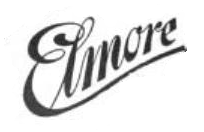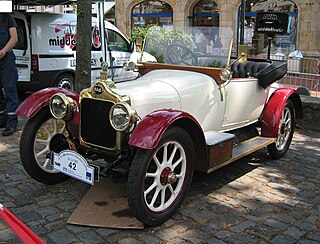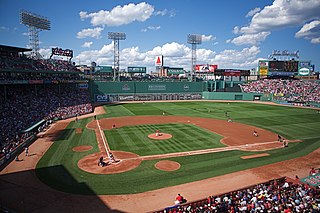
The McLaughlin Motor Car Company Limited was a Canadian manufacturer of automobiles headquartered in Oshawa, Ontario. It became General Motors of Canada.
Continental may refer to:

The Fédération Internationale de l'Automobile is an association established on 20 June 1904 to represent the interests of motoring organisations and motor car users. To the general public, the FIA is mostly known as the governing body for many auto racing events. The FIA also promotes road safety around the world.
The Locomobile Company of America was a pioneering American automobile manufacturer founded in 1899, and known for its dedication to precision in the pre-assembly-line era. It was one of the earliest car manufacturers in the advent of the automobile age. For the first two years after its founding, the company was located in Watertown, Massachusetts. Production was transferred to Bridgeport, Connecticut, in 1900, where it remained until the company's demise in 1929. The company manufactured affordable, small steam cars until 1903, when production switched entirely to internal combustion-powered luxury automobiles. Locomobile was taken over in 1922 by Durant Motors and eventually went out of business in 1929. All cars ever produced by the original company were always sold under the brand name Locomobile.

William Crapo "Billy" Durant was a leading pioneer of the United States automobile industry, who created the system of multi-brand holding companies with different lines of cars; and the co-founder of General Motors with Frederic L. Smith, and of Chevrolet with Louis Chevrolet. He also founded Frigidaire.

L'Aster, Aster, Ateliers de Construction Mecanique l'Aster, was a French manufacturer of automobiles and the leading supplier of engines to other manufacturers from the late 1890s until circa 1910/12. Although primarily known as an engine mass manufacturer the company also produced chassis for coach-works and a complete range of components.

The Peerless Motor Car Company was an American automobile manufacturer that produced the Peerless brand of motorcars in Cleveland, Ohio, from 1900 to 1931. One of the "Three Ps" – Packard, Peerless, and Pierce-Arrow – the company was known for building high-quality luxury automobiles. Peerless popularized a number of vehicle innovations that later became standard equipment, including drum brakes and the first enclosed-body production cars.

Elmore Manufacturing Company was a manufacturer of veteran and brass era automobiles and bicycles (1893–97), headquartered at 504 Amanda Street, Clyde, Ohio, from 1893 until 1912. The company took its name from its original place of manufacture, the nearby village of Elmore. Founded by Harmon Von Vechten Becker and his two sons, James and Burton, the Elmore used a two-stroke engine design, in straight twin or single-cylinder versions. They later produced a straight-3 as well.

E. R. Thomas Motor Company was a manufacturer of motorized bicycles, motorized tricycles, motorcycles, and automobiles in Buffalo, New York between 1900 and 1919.

Woods Motor Vehicle Company was an American manufacturer of electric automobiles in Chicago, Illinois, between 1899 and 1916. In 1915 they produced the Dual Power with both electric and internal combustion engines and this continued until 1918.
Electric Vehicle Company was an American automobile holding company and early pioneering manufacturer of automobiles.

The automotive industry in China has been the largest in the world measured by automobile unit production since 2008. Since 2009, the annual production of automobiles in China has exceeded that of the European Union or the United States and Japan combined. In 2016, for example, 33.9% of the world's cars were manufactured in China, over 205 million in total. The country is also a huge consumer of new motor vehicles, made in-country or imported. In 2017, for example, 4.16 million passenger and commercial vehicles were sold in China, up from 3.31 million in 2009.
The automotive industry in Canada consists primarily of assembly plants of foreign automakers, most with headquarters in the United States or Japan, along with hundreds of manufacturers of automotive parts and systems.

Calcott was a small English motor vehicle manufacturer based in Coventry. The company began as a bicycle manufacturer in 1886 taking advantage of a boom in the cycling industry at that time. The end of the century brought an end to the cycling boom and the demise of many bicycle manufacturers; however, Calcott managed to continue production and by 1904 was also building motorcycles. Production switched to automobiles in 1913 of which around 2,500 were made.

In the 1830s, practically all there was in the Syracuse, New York area, outside of the salt works, were 24 manufacturing establishments including a flouring mill, two carriage shops, a planing mill, tin shop, two leather manufacturers, three machine shops, a soap and candle factory, one brewery, one distillery, three marble shops and a boat yard.
Not to be confused with Century, a British motor company that produced cars until 1907

Iroquois Motor Car Company (1903–1907) was a manufacturer of automobiles in Syracuse, New York, and later, Seneca Falls, New York. The company was founded by John S. Leggett as Leggett Carriage Company and originally specialized in the production of automobile bodies.
During the years 1884 through 1934 there were a total of twenty different automobile makes in Syracuse, New York. Manufacturing was not limited to passenger cars as there were several trucks and motorcycles built in the city as well.
The Pierce Engine Company of Racine, Wisconsin, was manufacturer of the Pierce-Racine automobile. The company was founded in 1904 and production ended in 1909.
The automotive industry in Massachusetts refers to a period of time from 1893 to 1989 when automobiles were manufactured in the Commonwealth of Massachusetts commercially. During this time, the state produced more automobiles than Detroit, Michigan. During the 20th century, General Motors and the Ford Motor Company were producing automobiles at the Framingham Assembly and Cambridge Assembly, respectively.




















